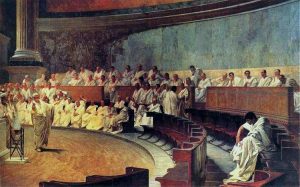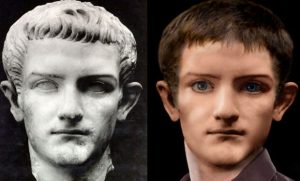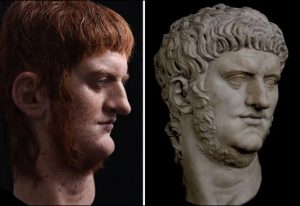
The Latin phrase “ damnatio memoriae ” means condemning the memory. Today, since the origin of many languages is based on Latin, the words that make up the phrase are familiar. “Damn” and “memory” are still used. There are some who say that languages like Italian, French and Spanish, which are derived from Latin, are not the languages but the dialects of Latin.
Damnatio memoriae is not actually an idiom used on an individual scale. The practice of the ancient world is the eradication of all kinds of worldly traces of the people who hate the people, who have suffered, who are cruel or sometimes trying to make radical changes in the general acceptances and traditions as if they have never lived. In other words, the remembrance of them, everything that reminds them of the curse and destruction.It’s kind of punishment. It is perhaps the instinctual threat that man’s desire to exist forever is the opposite. As soon as he dies, don’t destroy his tracks.The earliest known practice of this, though Latin, is the treatment of the Egyptian Pharaoh Akhenaton (also called Akhenaten). Pharaoh Akhenaton, who belonged to the 18th dynasty and ruled between 1353-1336 BC, tried to transform the religion of Ancient Egypt, which was composed of many gods, into a monotheistic religion with a radical intervention.
Board IV. After 5 years as Amenhotep, the pharaoh changed his name to Akhenaton (Akhenaton = Basaran for Aton / Servant of Aton). This is the first known monotheistic religion in world history.
Well, given the current situation, it would not be wrong to say that Akhenaton is quite far-sighted. In fact, the sun and the disk of the sun, symbolizing the only God Aton, resemble the monotheistic cult that soon emerged in Rome as the sun god Helios. There are even allegations that Christianity emerged from this trend. In fact, Sigmund Freud, in his 1939 book “Moses and Monotheism, eder claims that Moses, as the source of Judaism, was actually an Egyptian who tried to revive the monotheistic religion after Akhenaton, and was thus expelled from Egypt. In fact, such a look of damnation memoriaeIt is also possible to say that the effect of a person who has suffered from the memory of the world in the history of the world, almost everything in his memory.
Off very odd.
Akhenaton does not limit his reforms to religion, but attempts to make some political reforms, as can be seen from the fact that the country moved its capital from Thebes to Amarna.
Although he devoted his remaining 12 years to the throne in his struggle to adopt his reforms, he cannot be said to be successful. Because it was later called “heretic pharaoh ve and after his death, polytheistic religion reigned in Egypt. Akhenaton was cursed and the names, sculptures and reliefs of all inscriptions were engraved and removed. The Egyptians do not know what they said in this process but after hundreds of years it was the name damnatio memoriae in Rome .
His son was named Tutankhaten when he was born, but after his father was succeeded to the throne his name was changed to Tutankhamon. The capital moved back to its original place and the cults of all gods were released. Especially after Tutankhamon, Ay and Horemheb, who ascended the throne, scraped all the copies of Akhenaton from the structures he built, and took his name from all records. For this reason, a pharaoh called Akhenaton was not known until the city of Amarna was discovered in the 19th century. But no matter how much they try to destroy it, today Akhenaton is one of the most well-known pharaohs in Egypt, and as I said above, his memory has gone deeper than we thought.

| Famous stele showing Akhenaton along with his wife Nefertiti. The sun’s rays of God Aten reach them mercifully. Source: web1 |
Although the statement is in Latin, before Rome, in the Hellenistic world, there were those who visited Damnatio memoriae without being called so . For example, the rulers of Ephesus, the Temple of Artemis, one of the seven wonders of the world, according to rumors “for the name of history” burned Herostratus’un prohibited the mention of the name again. However, it is still a character whose name is always mentioned in the history of the temple today. In other words, Herostratus has achieved what he wants, but he is not well understood.
In Rome, damnatio memoriae was a common punishment imposed by the decision of the senate. If the Senate was convinced that an emperor or a statesman in a different position was a traitor or an enemy of the state, he could decide to erase the person from history as if he had never lived. Though it is usually the emperors ‘ damnatio memoriae . I don’t know if they’ve always been punished, or because theirs have survived to this day.
Examples of inscriptions with Damnatio memoriae (Source: web7-web8):

As is known, the Roman Empire was established as a modest kingdom. However, the republican administration was then adopted, the power was divided among the assemblies and a system was set up for appointing officials, consuls every year, to implement the decisions of these assemblies. As a result of many developments BC. In the 1st century, the regime was changed and the empire was dominated by a single person. After this date, the empire had a very turbulent life, and sometimes good, well-equipped and beloved empires such as the first emperor Augustus or Trajanus experienced positive developments. out of control.damnatio memoriae decision was issued. But it’s not fair to say that it always works like this. Sometimes an emperor could only make a damnatio memoriae decision for the emperor who preceded him for political reasons .

| That’s what the Roman Senate looked like. Painter: Cesare Maccari. Source: web2 |
The first damnatio memoriae was issued for Gaius Julius Caesar Augustus Germanicus (12-41 BC), known as the Emperor Caligula, a very very troubled friend, after being killed by his own guards. Caligula, who remained in power for 4 years between 37-41 AD, was able to win the hatred of almost everyone with his immorality, cruelty, extravagance and other oddities. However, his uncle Claudius (Emperor Tiberius Claudius Caesar Augustus Germanicus (10-54 BC)), who succeeded him to the throne, prevented this from being imposed. Well, a relative.

| The most fault of the emperors Caligula. Some even exaggerate and say the worst person ever, but not so much.Let’s just say he’s in the Top 10. Source: web3 |
Nero Claudius Caesar Drusus Germanicus (54-68 AD), another troubled nephew of Claudius of the same dynasty, was also a troubled friend. Aside from the controversy that didn’t burn Rome, this friend also went down in history with sexual problems, atrocities, and unstable behavior (probably because he didn’t, but he wasn’t too keen to put it out). Like Caligula, he was one of Rome’s most hated emperors.Although Nero is declared an enemy of the state after his death, it is unclear whether he was given a damnatio memoriae or not, but a glorious funeral would reduce this possibility.

| Another troubled emperor, Nero. Source: web4 |
Another damnatio memoriae was the emperor Domitian. This friend of the Flavius Dynasty, whose full name was Titus Flavius Domitianus (51-96 AD), also recorded his problems with the fly. Domitian, who does not understand the economy, caused the people to be crushed under heavy taxes and was stabbed to death. Marcus Cocceisus Nerva (30-98) was replaced by the senate, and he was given a damnatio memoriae . Therefore, it was decided to erase his name from all public records and the head of many Domitian statues or paintings was replaced with that of his successor Nerva.
Another distressed friend was the Emperor Marcus Aurelius Commodus Antoninus (161-192), known as Commodus. In addition to many unstable behaviors, Commodus had a very humiliating hobby for the emperors, such as going down to the arena and fighting gladiators. Although not exactly overlapping, the villain in the famous Gladiator is based on Commodus. But again, the real Commodus era does not exactly match the fiction in the Gladiator movie. The main boy in the film, Maxim Crowe’s portrayal of the character of Maximus has no place in history. unlike.
Commodus was so out of the ordinary that he changed the names of the moon and even changed the name of the capital Rome to Colomia Commodiana in the meaning of od Commodus Colony ”.
Anyway, this friend, like most incompetent emperors, was strangled in his own bath by the wrestler Narcissus, who was sent by his cousin, who was also his mistress, when he ruined the economy. What a glorious end…Upon his death, the senate imposed damnatio memoriae on Commodus , and the changes Commodus made during his life were revoked. At first, the capital’s name was changed to Rome again.
Of course, sometimes things can turn around. For example, Septimius Severus, a Roman emperor from 193 to 211, returned his reputation to Commodus in 195 to prove his ties to the Marcus Aurelius family and made him sanctified by the senate. So this is probably something like onur honoring his memory again şey.
Another damnatio was Roman Geta, who stopped by memoriae . Septimius Geta (189-211) was a member of Septimius Severius and his brother Caracalla. When Severius died in 211, Geta declared joint reigns with his brother Caracalla. Caracalla, who won the struggle for power after a while, killed his brother Geta’yı and applied him damnatio memoriae .
Or, some governments ‘ policies applied to their predecessors can be interpreted as updated states of damnatio memoriae .
It is a fact that as communication opportunities increase, it becomes more and more difficult to erase people’s traces. In fact, it is not far from the fact that the person who tried to erase the trace will become more visible in history after a while.Damnatio memoriae ‘ re reminds me of this film should not be mentioned:RESOURCESweb1: http://images6.fanpop.com/image/photos/37400000/Akhenaten-and-Nefertiti-with-their-Kids-
web2: www.ancient.euweb3: https://listelist.com/caligula-kimdir/web4: https://www.thesun.co.uk/tech/8556836/emperor-nero-3d-bust-caesar/
web5: https://truttafario.com/2012/03/29/domiciano/domiciano-2/
web6:
vikipedia web7: http://blog.delphinhotel.com/damnatio-memoriae-memory-fucking/web8
: Ancient History Encyclopedia www.ancient.eu/amp/1-12688/


